The low-tide mud by Putney Bridge
(The Medusa Frequency)
On the way to Earls Court the train passed Kew Gardens (" IN SEARCH OF PARADISE", said a sign), Hammersmith, the first real Hoban stop (for Moss & Co from The Bat Tattoo, which I would be coming back to later), and Baron’s Court, where Amaryllis lived in Amaryllis Night & Day.
The train arrived at Earls Court at 7.10 and I went down into the station’s mini-subway to walk underneath the tracks to the other side of the station to wait for a Wimbledon train for Putney Bridge. There were already two trains on either platform, one signed for Wimbledon and the other for Ealing Broadway. “THE TRAIN MARKED WIMBLEDON IS NOT GOING TO WIMBLEDON,” a voice announced. “THIS IS AN EALING BROADWAY SERVICE. THE NEXT WIMBLEDON TRAIN WILL ARRIVE IN TWO TO THREE MINUTES.” The platform was dotted with quiet faces; nobody was saying anything. The trains left and presently the Wimbledon train arrived. I got in and stood up for the few stops. The carriage seemed largely populated by men in their twenties and thirties in hats and anoraks with rumpled, pale faces. Some of them also carried toolboxes and rucksacks bulging with equipment and wore dusty boots that wouldn’t give them access to the Zetland Arms. I remembered in my days on the night shift at the press-cuttings agency when I would come home at this time in the morning, earlier sometimes, and see several guys armed with industrial-sized spirit-levels get on the Tube on their way to various labouring jobs across the capital. I always thought of it as the Battle of the Spirit-Levels, and imagined them fighting each other, martial arts-style, for somewhere to sit or even stand on the packed commuter carriages. Of course there’s never any such shenanigans at this time in the morning; nobody’s awake enough for aggro.
The train got to Putney Bridge at 7.20. The sun had started to rise a few minutes before through a sky of thick blue clouds. I walked downstairs into the street, trying to write in my Roaring Spring notebook at the same time, an unwise option especially given the proliferation of industrial-sized spirit-levels around me. The exit from the Tube station gave directly onto a bus shelter, a café and a sandwich shop which was closed. Putney Bridge itself was a couple of minutes’ walk away but a sign with an acorn and the words THAMES PATH caught my eye, and I decided to follow that out of interest, even though I’d never been that way before. The sign led underneath the railway bridge and as I walked under it my train rumbled away above me.
On one of the arches under the bridge was a blue plaque; you see them all over buildings in London, printed with the name of a famous dead person from history who lived or worked there. This one was in honour of Frederick Richard Simms: as The Daimler and Lanchester Owners’ Club Online explains, Simms was a British inventor and engineer who, from his first workshop on this spot – Archway 71, Putney Bridge – teamed up with the Daimler family in the late 19th century and applied the legendary automobile firm’s principals to water-borne craft.
The “Thames Path” led me up on to a pedestrian bridge running parallel with the railway bridge and didn’t seem to allow access down to the low-tide mud; still, it didn’t matter, since Herman Orff’s rendezvous with the head of Orpheus occurred on the other bank. The bridge gave a good view of the river and the sky, which was shaping up interesting, as well as Wandsworth Common with its line of bare trees running parallel with the iron railings and the Thames. I remembered that a scene from the film The Omen – Gregory Peck’s meeting with Patrick Troughton’s stressed-out priest – was shot there. My mum and dad live a short walk away, and I’d been there many times to walk their dog.
A jogger in candy-stripe shorts panted past me as I stepped down the other side of the footbridge into a residential road. Still no sign of the low-tide mud, and the “Thames Path” track seemed to have dried up. Typical, I thought; you follow the signs instead of your nose and you end up in the wrong place. I walked up a bit and finally found another “Thames Path” sign, which led me to Putney High Street and, bizarrely, away from the river. I decided to stick with it and picked up the “Thames Path” again near Putney Police Station, which had a large cartoon figure in the window and a sign saying ANOTHER BURGLAR FOILED. Surely they meant “burglary”, or was wrapping thieves in kitchen foil the Met’s latest crime deterrent?
The road opposite the police station was filling with cars, buses and cyclists all now awake enough to give each other aggro. Putney Odeon was showing Lantana at ten o’clock. Ahead of me Putney Bridge loomed against a now-pale-blue sky, and the low-tide mud was visible over the parapet, as were a flight of steps down to it. Typical; I could have got down there in half the time if I hadn’t followed the “Thames Path” and had gone the Herman Orff-approved route directly over the Bridge itself. Finally, at about half-past seven, I got to my first Hoban location of the day. My shoes crunched on the stones and squelched in the mud. The smell was thick and green; the Thames lapped a few feet away. It was easy to see a rotting, barnacled head fetching up here and telling its story; by contrast, it was difficult to see how I could get a sheet of yellow paper to stay anywhere nearby, but I noticed a heavy chain hanging against the harbour wall and slid the yellow paper between them. To remain true to the passage in The Medusa Frequency which had brought me to this spot, I said aloud, “Yes, I will.” I had no idea exactly what I was letting myself in for, but it seemed the right thing to do under the circumstances.
Next stop <----- Click on the 'Next stop' link at the bottom of each subsequent post to progress through Richard's tour

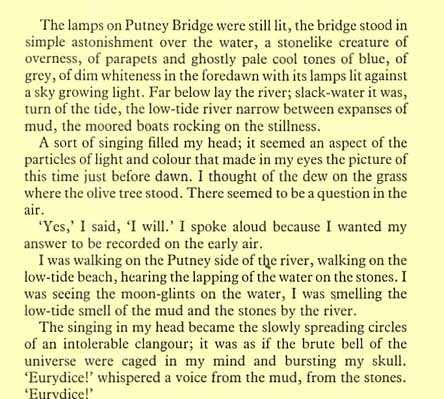



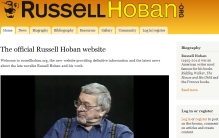

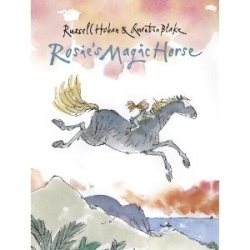
 On 4 February 2012 the Slickman A4 Quotation Event celebrated
On 4 February 2012 the Slickman A4 Quotation Event celebrated 


 In 2005 the first international convention for Russell Hoban fans took place in London, and was marked by the publication of a fantastic 48-page booklet featuring exclusive contributions from innumerable fans and associates including novelist David Mitchell and actress Glenda Jackson. A wonderful memento of the event, it's also a beautiful collector's item and must-have for any Hoban fan. Although in limited supply, copies of the booklet are still available at £6.00 each plus p&p. Order direct from
In 2005 the first international convention for Russell Hoban fans took place in London, and was marked by the publication of a fantastic 48-page booklet featuring exclusive contributions from innumerable fans and associates including novelist David Mitchell and actress Glenda Jackson. A wonderful memento of the event, it's also a beautiful collector's item and must-have for any Hoban fan. Although in limited supply, copies of the booklet are still available at £6.00 each plus p&p. Order direct from  Russell Hoban turned 86 on 4 February 2011 and fans celebrated in traditional style by leaving quotes from his books in public places. Browse their quotes
Russell Hoban turned 86 on 4 February 2011 and fans celebrated in traditional style by leaving quotes from his books in public places. Browse their quotes  To celebrate 30 years in print of Russell Hoban's most famous novel
To celebrate 30 years in print of Russell Hoban's most famous novel 
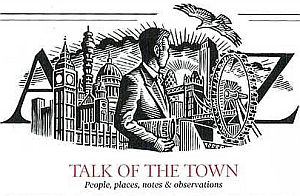
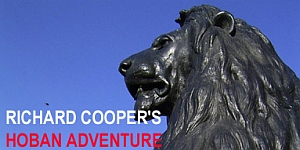




No comments:
Post a Comment
Note: only a member of this blog may post a comment.